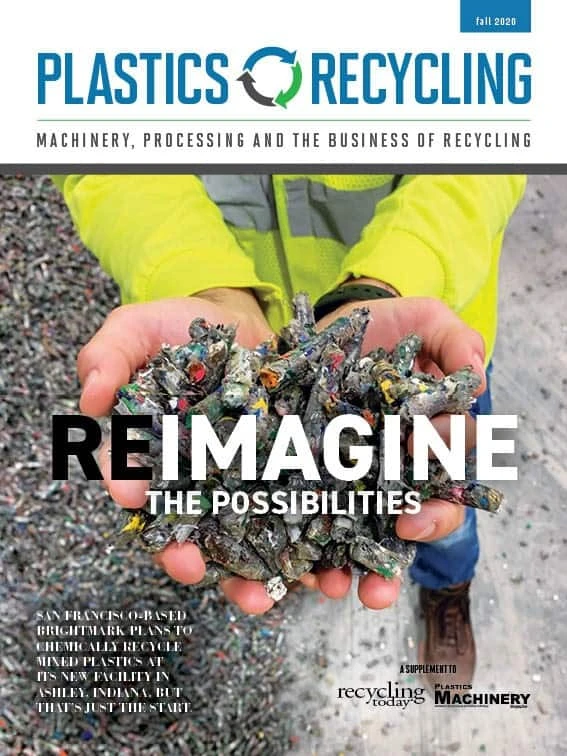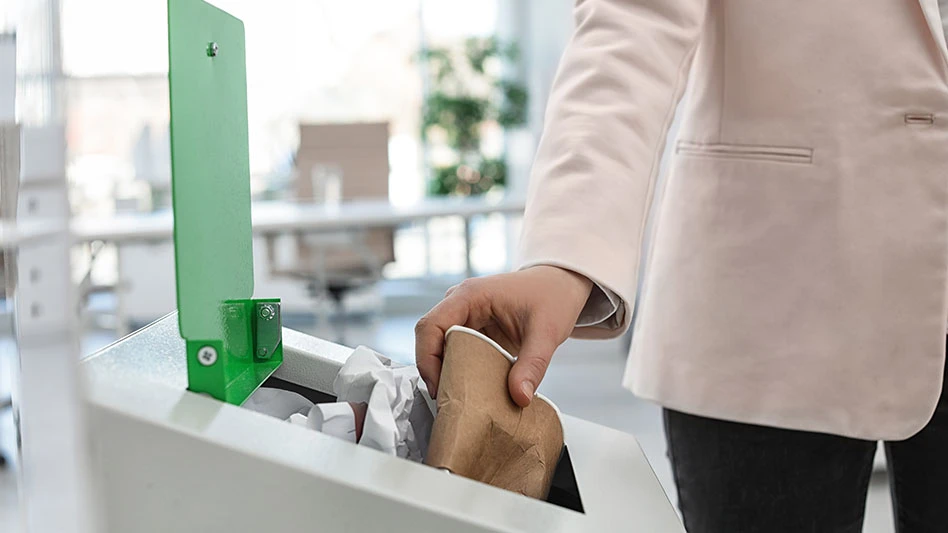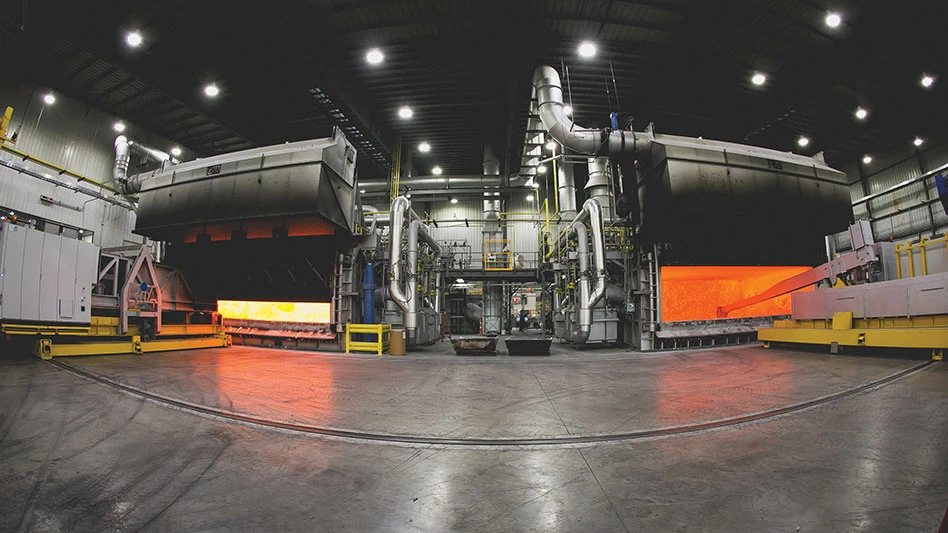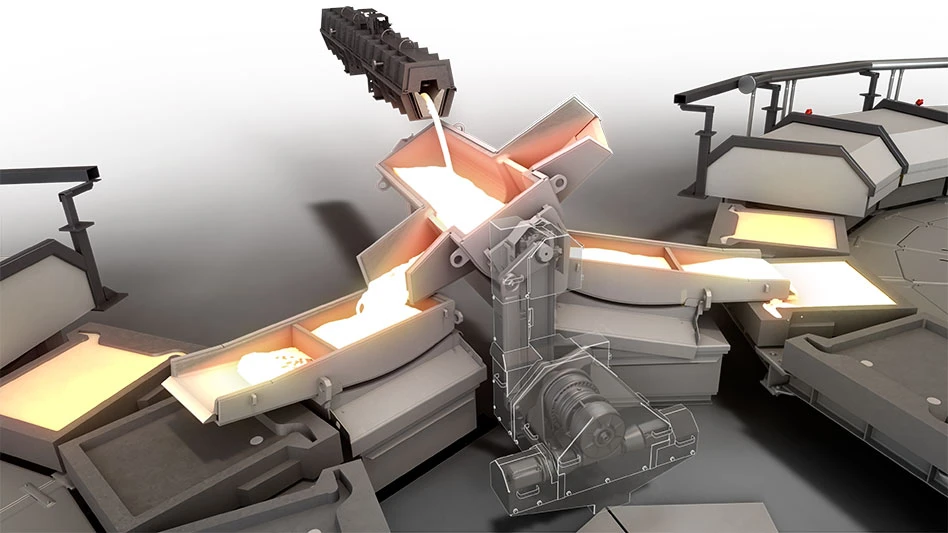_fmt.png)
This summer, specialty plastics provider Eastman Chemical Co., Kingsport, Tennessee, introduced Tritan Renew copolyester, a product that contains up to 50 percent recycled content derived from the company’s Advanced Circular Recycling technologies. Nalgene is among Eastman’s customers using its Tritan Renew copolyester made with 50 percent chemically recycled plastic.
The announcement came a little more than a year after the company first announced its commercial chemical recycling intentions. In 2019, Eastman began commercial-scale recycling for a broad set of plastics using its Advanced Circular Recycling technologies—carbon renewal technology (CRT) and polyester renewal technology (PRT).
Making good on its promise
Scott Ballard, vice president and general manager for Eastman Specialty Plastics, says the company is making chemical recycling “real for the rest of the world” with its most recent announcement. However, he prefers the term molecular recycling. “I like the term molecular recycling because it actually talks about what’s being recycled. Chemical recycling is the process by which you are doing it.”
He says Eastman has a few molecular recycling technologies at its disposal, with CRT being the most versatile. The company is operating this technology at scale presently. “It handles the most types of mixed plastics outside of [polyvinyl chloride].”

Image: Eastman
As far as its PRT, the company has two processes: methanolysis, which Eastman is using at pilot scale today with a commercial facility planned for the end of 2022; and glycolysis, which the company is using to produce Tritan Renew. Ballard says glycolysis handles a narrower range of input materials but enables Eastman to recycle waste to produce the copolyester.
“All three of the technologies have a lower greenhouse gas impact than the traditional fossil-based process,” he says. Depending on the end-of-life plastics used for feedstock, these processes can improve Eastman’s carbon footprint by 20 percent to 50 percent at the intermediate or monomer level when compared with processes that use fossil feedstocks, according to the company.
Using glycolysis, Eastman disassembles polyethylene terephthalate (PET) scrap into its fundamental building blocks. These building blocks are then used to produce polyesters that can claim high levels of recycled content without compromising quality, the company says.
The later phase of PRT using methanolysis will break down a wide variety of polyester scrap, Ballard says, including colored and clear PET; PET-glycol, or PET-G; copolymers like Tritan; and carpet, for example.
Improving on a classic
Eastman introduced the original Tritan in 2008. Since that time, Ballard says, the product has come to be known for its clarity and durability. “Tritan has been a really great success for Eastman. It’s not very often that a new polymer made from a new monomer comes to the market.”
As for the decision to incorporate PRT-recycled content into the product, which is used to make durable goods such as reusable sports bottles, food-storage containers and small appliances, he says, “I’d like to say it was strategic forethought … but the reality is that we didn’t choose Tritan, the marketplace did and our customers did.” Ballard adds that Eastman’s customers Nalgene and CamelBak (See Product Pull-Through for more information.) had expressed an interest in moving quickly to incorporate recycled content into their products.
He says by the way customers have embraced Tritan Renew, it “feels like we are doing something right.”
Ballard adds, “To be completely circular and get away from linear, when something gets to its end of life, we have to be able to create something new from it. Tritan Renew is a great example of that.”
Tritan Renew is no different in terms of specification than the company’s original Tritan, Ballard says. “If someone is already using the heritage version, Tritan Renew drops right in with no change.”
When asked if Eastman eventually will produce only Tritan Renew rather than the virgin-based Tritan, he says, “I think we would love for that to be the truth. I think the market will decide that portion of it.” He adds that the company is establishing capacity and is willing to make the necessary investments based on the market.
_fmt.png)
Tritan Renew is more expensive than the traditional Tritan. “Innovation takes investment, investment takes return,” Ballard says. “So far, we have been able to manage the costs to the point that it is not cost-prohibitive. We have been able to price it so that price has not been a barrier to adoption on any of the projects that we are working on.”
He says Eastman decided to cap the recycled content in Tritan Renew at 50 percent because that is what the market seemed to want and the company finds it a “meaningful” percentage, though it could increase the proportion of recycled content. “Technically, we are limited by the monomer that is used. For Tritan Renew, you can get close to 90 percent depending on how much of the [dimethyl terephthalate] monomer is used.”
The recycled content used in Tritan Renew is certified through a mass balance allocation process by Germany-based ISCC (International Sustainability & Carbon Certification). Ballard says Eastman worked with ISCC to set up the process, establishing boundary conditions, tracking and securing third-party validation. “We also are working with them to work down the value chain,” he says, through to the product molder and retailer.
Planning for more
While Eastman has set a goal to recycle 50 million pounds of plastic this year using its molecular recycling technologies, Ballard says the pandemic has affected its plans somewhat. “While we are proud to say that our technical capabilities and capacity have kept pace with that goal that was set pre-coronavirus, the demand side of it hasn’t,” he adds. “The reality is that COVID- 19 has impacted the market both on the demand side as well as on the market’s ability to innovate and launch new products with new materials. At this point, it’s going to be a long shot that we will get to 50 million pounds in 2020, but we are hopeful to be at that rate by the end of the year and then be in good position to do that much or more in 2021.”
Eastman is launching recycled-content versions of other polymer products, all under the Renew moniker, Ballard says. They will be used to make eyewear and reusable packaging for cosmetics and personal care products. Eastman also is working with electronics brands to develop earbuds, headphones and audio cases made from sustainable materials.
He says Eastman believes it can play a role in creating value from waste. “If we can handle hard-to-process waste, not only will we divert more material from landfill and incineration, but it will help us get to a cost position that can speed acceptance.”
Ballard says the company is only part of a larger collaborative effort. “Ultimately, we are trying to leverage our 100-year history of innovation that leverages collaboration and drives us to believe in what’s possible,” he says. “Our polymer products have required us to develop an approach to partnering because we are using unique things that we have to ... work with our customers and their processes to make them work. So much of this journey that we are on is yet to be defined, and it’s only through partnerships that this is going to be possible.”

Explore the Fall 2020 Plastics Recycling Issue
Check out more from this issue and find your next story to read.
Latest from Recycling Today
- Fenix Parts acquires Assured Auto Parts
- PTR appoints new VP of independent hauler sales
- Updated: Grede to close Alabama foundry
- Leadpoint VP of recycling retires
- Study looks at potential impact of chemical recycling on global plastic pollution
- Foreign Pollution Fee Act addresses unfair trade practices of nonmarket economies
- GFL opens new MRF in Edmonton, Alberta
- MTM Critical Metals secures supply agreement with Dynamic Lifecycle Innovations






